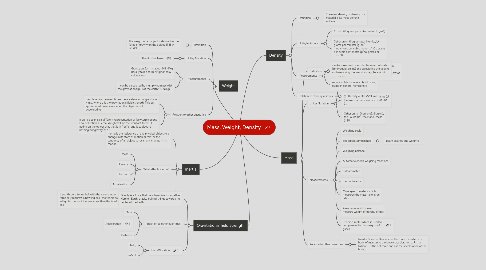
1. Weight
1.1. Definition
1.1.1. The weight of an object is defined as the force of gravity on the object. IT IS A FORCE:)
1.2. Units/ Notation
1.2.1. SI unit is the Newton(N).
1.3. Measurements
1.3.1. Gravity on Earth is about 9.8 N/kg usually taken as 10 N/kg for easy calculations.
1.3.2. It can be calculated by multiplying mass with the gravitational pull of the earth (10 N/kg)
1.4. Relation to other quantities
1.4.1. calculated as the mass times the acceleration of gravity, w = mg, where g is the gravitational field strength. This eqn applies at all times even when the object is not accelerating
1.4.2. It can be seen as a different representation of Newton's second Law of Motion: F = ma. Weight will be the resultant force(F) acting on the object that that is in freefall and is subject to nothing but gravity(acc.)
2. Inertia
2.1. Inertia is the resistance of any physical object to a change in its state of motion or rest, or the tendency of an object to resist any change in its motion.
2.2. What affects inertia?
2.2.1. Mass
2.2.2. Gravity
2.2.3. Friction
2.2.4. Acceleration
2.3. Examples of inertia at work
2.3.1. If you throw a tennis ball with the same amount of force as you throw a bowling ball, the tennis ball will go further as it has less mass than the bowling ball.
3. Gravitational field strength
3.1. Gravity is a force that pulls two objects together. Here on Earth, gravity pulls all things towards the center of the Earth
3.2. Relation to other quantities
3.2.1. Mass
3.2.2. Acceleration
3.2.3. Distance
3.3. Units/Notation
3.3.1. N/kg
3.3.2. m/s^2
4. Mass
4.1. Definition
4.1.1. Mass is the quantity of inertia possessed by an object or the proportion between force and acceleration referred to in Newton's Second Law of Motion.
4.2. Units/ Notation
4.2.1. SI unit: Kilogram (kg)
4.2.2. Other acceptable SI units: Tonnes (t), Electronvolt (eV), Atomic mass unit (u)
4.2.3. Other units: Grams (g), Slug (sl), the Pound (lb), the Planck mass (mP)
4.3. Measurements
4.3.1. Weighing scale
4.3.2. The laboratory balance
4.3.2.1. Beam balance and weights
4.3.3. Weighing balance
4.3.4. Automatic check-weighing machines
4.3.5. Katharometer
4.3.6. Inertial balance
4.3.7. Mass spectrometers which measures the mass-to-charge ratio
4.3.8. Aerometer which is used to measure weight of density of gas
4.3.9. Effusion-meter which is used to compare molecular weights of gases
4.4. Relation to other quantities
4.4.1. Newton's second law relates the force F exerted in a body of mass m to the body's acceleration a: F=ma (where F is the net force and a is the acceleration of the body)
5. Density
5.1. Definition
5.1.1. The mass density or density of a material is its mass per unit volume.
5.2. Units/Notations
5.2.1. SI unit: kilograms per cubic meter (kg/m3)
5.2.2. Other units: kilograms per liter (kg/L), grams per milliliter (g/mL), metric tons per cubic meter (t/m3), grams per cubic centimetre (g/cc, gm/cc or g/cm3)
5.3. Measurements
5.3.1. can be measured using displacement of water (for irregular solids) and calculating the volume and measuring the mass (for regular solids).
5.3.2. regular solids include: cuboid, cone, cylinder, sphere, hemisphere
5.4. Relation to other quanitities
5.4.1. Density = Mass/Volume
